BOTOX® – HERO OF COSMETIC PROCEDURES – THE ULTIMATE GUIDE!

In today’s guide, I am going to tell you everything you need to know about BOTOX®. Are you interested in finding out how BOTOX® treatments provide a smoother and line-free complexion?
Read the following chapters.
TABLE OF CONTENT:
- What is BOTOX® and how does it function?
- How did BOTOX® attract so much attention in the world of cosmetic procedures?
- Why oh why do we get wrinkles?
- How can BOTOX® improve gummy smiles?
- BOTOX® does wonders with excessive sweating.
- How much BOTOX® is enough?
- Baby BOTOX® – smaller doses
- Can gents use BOTOX®?
- Why is BOTOX® the number one cosmetic procedure?
- How can BOTOX® help with chronic migraines?
- Unusual BOTOX® treatments – cervical dystonia and bladder incontinence.
Ladies and gentlemen meet BOTOX®!
1. WHAT IS BOTOX® AND HOW DOES IT FUNCTION?
Have you ever wondered where BOTOX® comes from? What’s the magic behind this awesome cosmetic product?
Believe it or not, BOTOX® is a derivative of the bacteria Clostridium Botulinum. It was first discovered by a Belgian scientist Emile Pierre van Ermengem after a botulism outbreak in Belgium. Then by the 1920s, scientists at the University of California, San Francisco, first tried to isolate the botulinum toxin. Today, it is a therapeutic agent also known as Botulinum Toxin Type A. This bacterium is widespread and can be found in the soil. It is rod-shaped and can produce neurotoxin botulinum.
BOTOX® is made in laboratories in controlled conditions and it is administered in extremely small doses. It has a completely purified botulinum toxin protein.
To BOTOX® or not?

Toxin – you might ask yourself, how is BOTOX® safe then? YES! Yes to BOTOX®, and YES it’s safe!
As I said, it is given in small doses and it does wonders in the cosmetic and medical world.
Now that we covered what BOTOX® is, let’s talk about its
MECHANISM OF ACTION
Botulinum toxin is a neurotoxic protein extracted from the bacterium Clostridium botulinum and related species, and it stops the release of the neurotransmitter called acetylcholine. It is a chemical that works in the body and brain as a messenger between nerve cells – neurons, gland cells or muscle cells. It is released by motor neurons in the nervous system and activates muscle contraction.
Botulinum toxin takes over the nerve cells and releases an enzyme that stops muscle contraction. This enzyme binds to a protein called SNARE which is responsible for forming a complex neuromuscular junction in a synapse between muscle and nerve cells. So, if there are no SNAREs, nerves are not able to send chemical signals that provoke muscles cells to contract and thus cause muscle relaxation by inhibiting the release of acetylcholine from presynaptic motor neurons.
The botulinum enzyme takes over one of the SNARE proteins and splits it in two – that’s enough to stop it from functioning.
WHY IS THIS INTERESTING TO YOU?
Well, in a nutshell when you get BOTOX® injections they relax the muscles on your face that create wrinkles around the eyes and on the forehead. The wrinkles are reduced and your face looks smoother.

After getting BOTOX injections, muscle movements that create wrinkles are stopped or largely reduced. Patients that used BOTOX® say that the effects of the injections administered to their targeted area actually freeze that area for a little while. In general, BOTOX® lasts between 3 to 4 months. There are some patients in who it lasts longer, up to 6 months or shorter less than 3 months. It is also common that for the first-timers to notice that it may not last as long initially, but may last longer after the second treatment. As you can see, how long BOTOX® lasts varies from patient to patient.
But, enough about chemistry. Let’s talk now about the history of BOTOX®.
Read the following chapter.
2. HOW DID BOTOX® ATTRACT SO MUCH ATTENTION IN THE WORLD OF COSMETIC PROCEDURES?
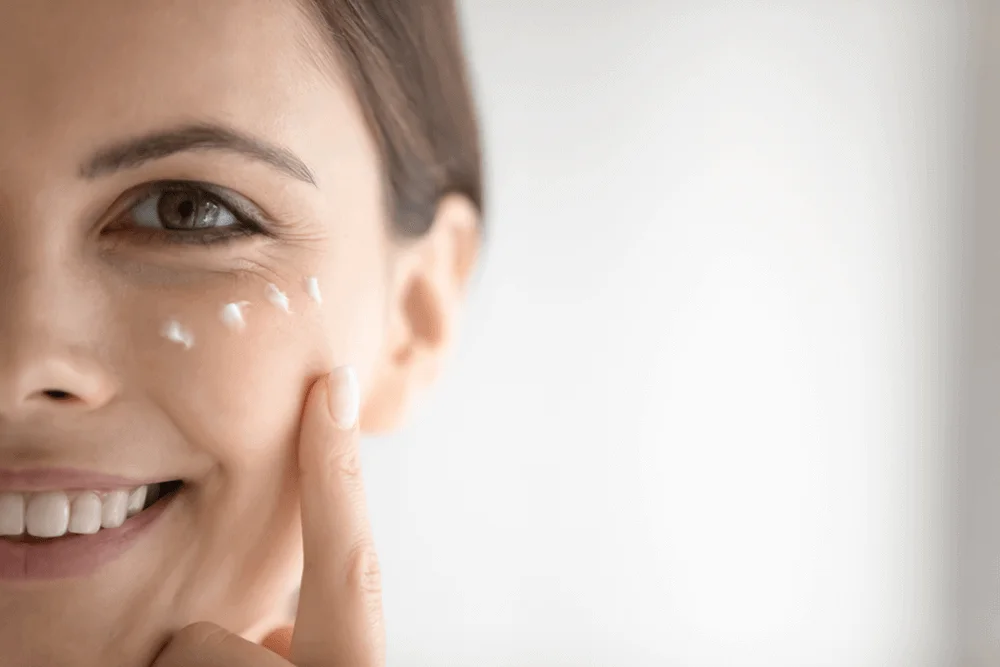
The usages of BOTOX® seem endless today. But before BOTOX® was even considered for cosmetic treatments it was used for completely different purposes – to treat crossed eyes and eye twitching.
Back in the 70s, scientists began to treat strabismus (crossed eyes) with botulinum toxin. Strabismus results in improper alignment of the eyes when looking at an object. The eye that focuses on an object can alternate.
Anyway, botulinum toxin was first injected into monkeys ’ extraocular muscles. The results were amazing, regarding the fact that only a few picograms affected the targeted muscles and temporarily froze them without any side effects.
Scientists, that conducted this research, noticed that botulinum toxin reduced wrinkles in the glabellar part of the forehead. The glabellar part is between the eyebrows and above the nose.
The first human patients who suffered from strabismus were injected with botulinum toxin type A in 1977, and soon after that hundreds of ophthalmologists were using it in the treatments.
After thousands of patients who received this treatment, Allergan got FDA approval in 1989 to market Botulinum toxin type A to treat strabismus and blepharospasm (eye-twitching) under the trademark BOTOX®.
The potential for other usages of it was discovered. From that moment on, Botulinum toxin got its role in cosmetic procedures for wrinkle reduction. BOTOX® was on its way to becoming popular.
HOW DID BOTOX® EMERGE INTO THE COSMETIC WORLD?
Botulinum toxin was used for cosmetic purposes for the first time when a plastic surgeon treated forehead asymmetry. The asymmetry was caused by forehead nerve paralysis on the left side. More importantly, the treatment was successful and it made wrinkles on the right side smoother – it matched the left side that was paralyzed.
All in all, other specialists from ophthalmology and dermatology fields noticed that patients who were treated from eye-twitches and received Botulinum Toxin type A around the eyes and upper face ended up with reduced glabellar lines (frown lines).
And BAM! BOTOX® got popular in cosmetic use and in 2002, FDA cleared BOTOX for temporarily reducing the appearance of moderate to severe glabellar lines.
The cosmetic use of BOTOX® has become widespread.
Take a look at the dates of FDA approvals for botulinum toxin:
1. Strabismus and blepharospasm in 1989
2. Cervical dystonia in 2000
3. Glabellar lines in 2002
4. Axillary hyperhidrosis in 2004
5. Chronic migraines in 2010
6. Urinary incontinence in 2011
7. Crow’s feet in 2013
Now that we covered history, let’s move on to the most popular usages of BOTOX®.
Read the following chapter.
3. WHY OH WHY DO WE GET WRINKLES?
Well, because they are a normal sign of aging. There are also some other factors that contribute to the appearance of wrinkles like your lifestyle – sun exposure, unhealthy habits or repeated facial movements. Luckily, BOTOX® can really do wonders when it comes to wrinkle reduction around the mouth and eyes.
Before we reveal the secrets of BOTOX® let’s talk about wrinkles in more detail.
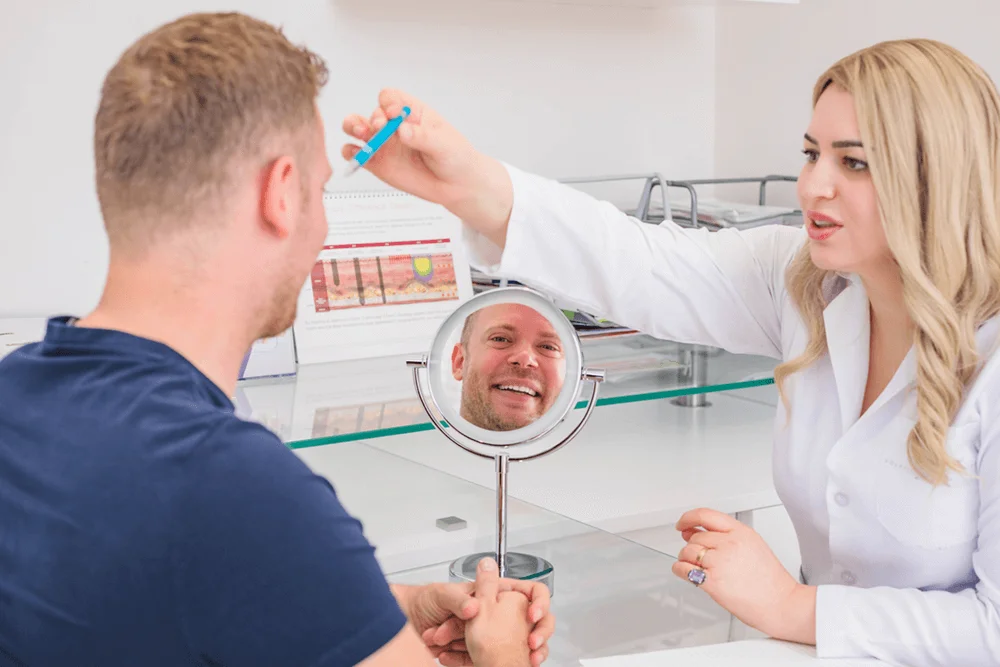
CAUSES OF WRINKLES
Wrinkles are lines, furrows and creases in your skin. They are a result of aging skin and volume loss and are completely natural. They appear because your skin gets thinner and drier because of the lower production of collagen. Also, your skin loses its ability to rejuvenate itself and gradually gets pulled down by gravity.
How many and how severe your wrinkles will appear, depend on your lifestyle which can greatly contribute to these signs of aging.
AGING
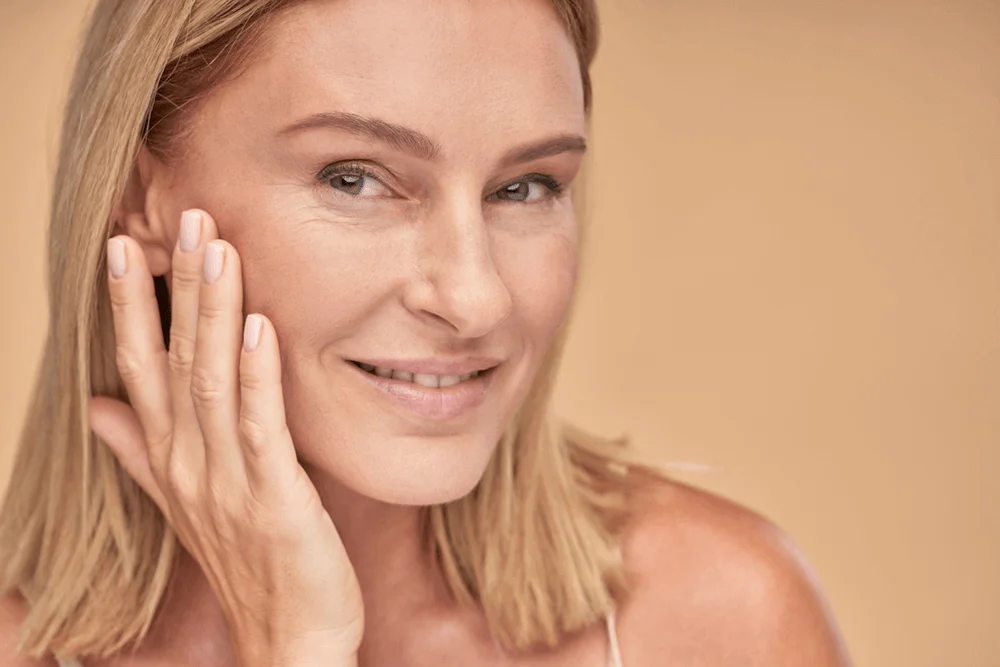
As we get older, our skin changes. Since the skin cells divide more slowly the dermis or skin’s middle layer gets much thinner. The dermal layer consists of elastin and collagen, the proteins that keep the skin elastic and strong. These proteins also loosen and cause wrinkles on the surface of the skin.
In the deeper layers of the skin, there are fat cells and they also diminish in the subcutaneous tissue. Skin gets dry because it loses its ability to absorb and maintain moisture and also sebaceous glands produce less oil – all this contributes to the appearance of wrinkles.
Skin loses its natural ability to repair because blood vessels start to inhibit blood and oxygen flow to skin cells.
Gravity plays a major role in wrinkle appearance because it causes the skin to become loose and saggy, which in turn emphasizes wrinkles and fine lines.
Women lose estrogen in menopause and with it they lose the collagen by up to 30%.
We can’t escape getting older, but there are other aging factors that we can avoid.
SUN EXPOSURE
Did you know that exposure to the sun’s ultraviolet rays causes 90% of skin aging – also known as photoaging? The ultraviolet rays from the sun penetrate into the skin and damage the elastic fibers that keep the skin firm, allowing wrinkles to develop. Sunlight is also responsible for age spots or “liver spots” on the hands, face and other sun-exposed areas. The severity of damage is established by the total exposure to UV rays in our lives. It is also determined by skin color or pigmentation. The darker the skin the better protection is established from the effects of sun exposure.
Sun can be bad for the skin in various ways. It can damage the collagen in the dermis and cause the elastin fibers to build up at exceptionally high levels. This causes metalloproteinase enzymes to be produced in large amounts. So, instead of repairing the collagen as these enzymes normally do, they break the collagen down, because of the sun damage. This leads to the formation of solar scars. If this process constantly repeats it eventually develops wrinkles.
UNHEALTHY LIFESTYLE
Unhealthy habits can greatly contribute to the appearance of wrinkles and make the skin look older than it actually is. Crash diets can cause wrinkles and sagging skin because when the skin ages it loses its elasticity and can’t adjust to the rapid weight loss.
Also, sleeping is beneficial for keeping your skin fresh and rejuvenated. Not getting enough sleep contributes to the appearance of wrinkles and tired looking faces.
Avoiding fresh fruit and vegetables is bad for complexion, because you don’t get enough hydration and your face gets wrinkles sooner than it should. Include a lot of different fruit and vegetables in your diet and you will provide your body with hydrating and nutritious sources.
Facial movements
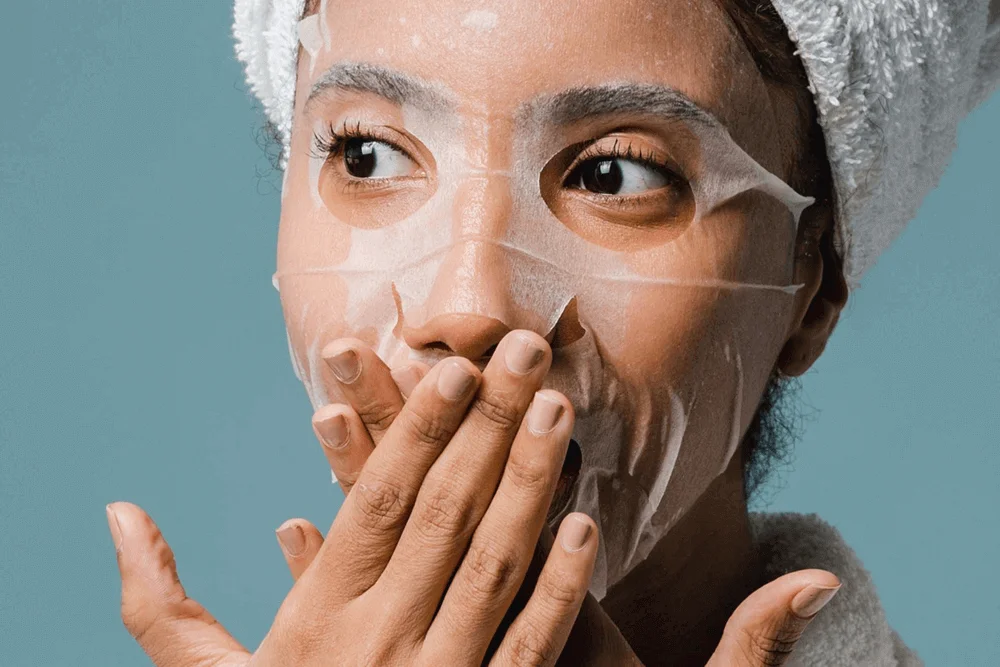
Frowning, squinting and smiling are facial movements that when done repetitively cause the contraction of tiny facial muscles. As time passes these muscles don’t relax and together with gravity cause wrinkles to appear.
These facial wrinkles can be deep crevasses between the eyes, nasolabial folds, or lines that go vertically from the upper lips.
NOT ALL WRINKLES ARE THE SAME
We can have three types of wrinkles – dynamic, static and wrinkle folds.
Dynamic wrinkles are the ones that appear when your facial muscles move – when you laugh smile or squint. They are caused by contraction of muscles that are attached to the overlying skin. Each muscle contraction causes the skin to bunch together and form the lines between the bulk of the muscles. When the skin is still young, it can bounce back to being smooth, after the facial expression is over. That’s because it’s full of collagen, elastin and other important proteins that keep it flexible and youthful. BOTOX® is an awesome solution for dynamic lines because it works as a prevention measure – it keeps dynamic lines from actually becoming wrinkles and staying on your face.
Some of the dynamic wrinkles include
- Forehead wrinkles
- Frown lines (between your eyebrows)
- Crow’s feet (at the outer corner of your eyes)
- Smile lines
- Lip lines
Then as time passes and the skin gets older, dynamic wrinkles turn into
STATIC WRINKLES
They are the culprit of us looking older than we are. They have a bad reputation. Why? Because once they appear on the face, they are there to stay. Their visibility is strong, and even though they start as small lines, they get deeper and deeper. The major cause of static wrinkles is the natural loss of collagen and elasticity. As the skin begins to age, collagen starts to break down and this results in folds, creases and lines. Static lines may also appear because of smoking, extended sun exposure or genetics.
Static wrinkles may Include:
- Tear through lines (under the inner corners of the eyes)
- Marionette lines (from the edge of the mouth down to the jawline)
- Nasolabial lines (from your nose down to the outer corners of the mouth)
- Lateral cheek lines
- Necklines
BOTOX® TO THE RESCUE
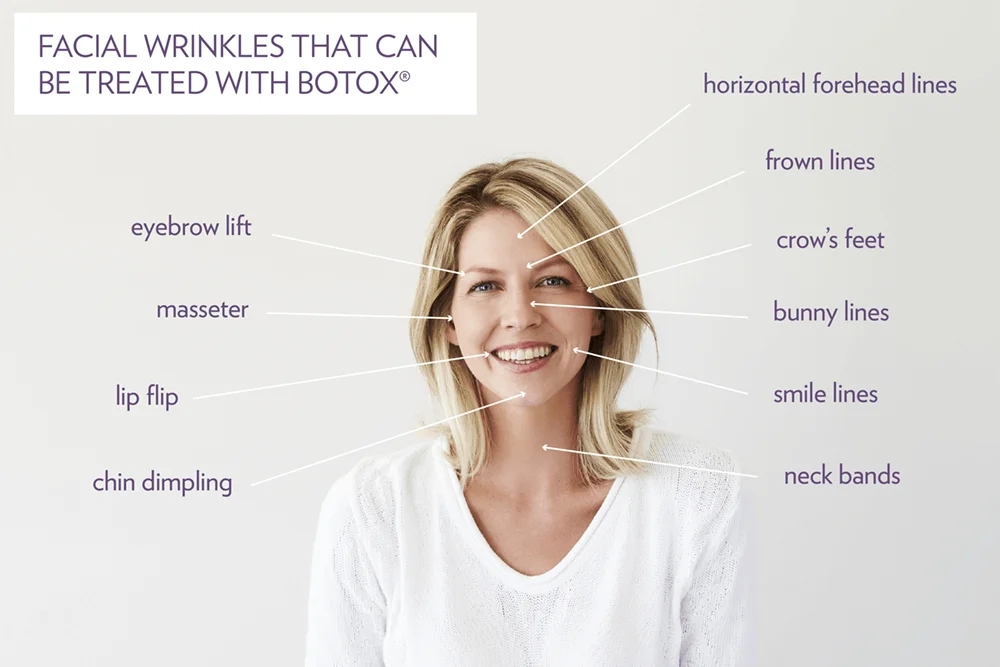
BOTOX® is the most appropriate procedure for treating dynamic wrinkles because it reduces the muscle movements that cause them. BOTOX® injections relax the muscle contraction and dynamic wrinkles no longer occur.
Static lines are a bit trickier, but a proper dose of BOTOX® and repetitive treatments can soften them over time. Or the best solution would be a combination of BOTOX® and dermal fillers.
FACIAL WRINKLES THAT CAN BE TREATED WITH BOTOX®
Do you want to find out how BOTOX® does wonders on the following facial wrinkles? Check out the list below.
1. Glabellar lines
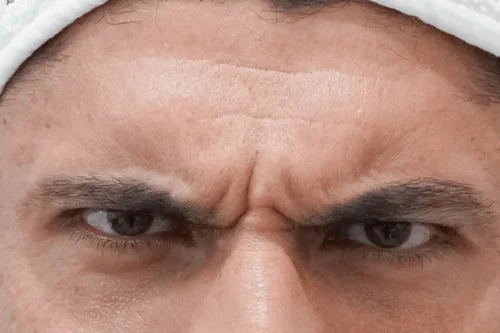
More colloquially known as frown lines or ‘11’ lines, glabellar lines appear between your eyebrows and above your nose.
They are the first sign of aging for many people and they can first appear in the mid-20s. A lot of young people start with BOTOX® to stop the advancement of these wrinkles.
Glabellar lines become more noticeable as the skin loses collagen and elastin and are a natural part of aging. Muscles that contract between eyebrows in a downward movement make these lines stay permanent on the face. The result – people get a constant frowning look, and they appear older and angry all the time.
BOTOX® is a safe and absolutely effective non-surgical treatment for avoiding or reversing the frown face appearance. BOTOX® injections freeze the contraction of glabellar muscles and create a smooth and youthful forehead.
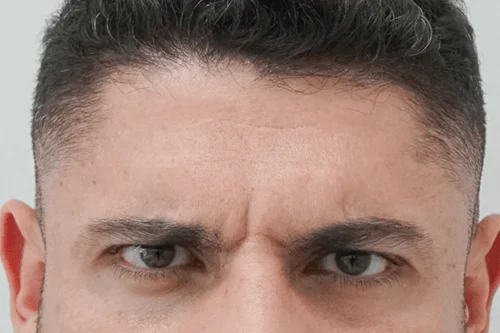
2. Crow’s feet
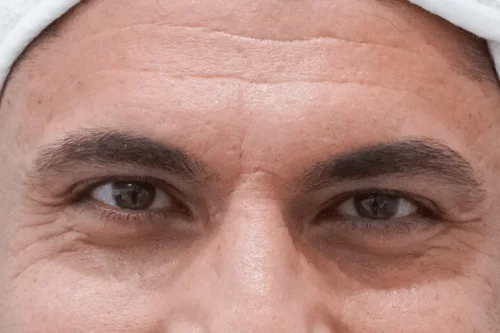
These lines are also called lateral canthal lines or periorbital lines. They branch out from the outer corners of the eyes while squinting or smiling.
Crow’s feet appear because of the loss of collagen and skin elasticity and extensive sun exposure.
These wrinkles do have some more flattering names like laugh lines or character lines, but still, they are the evidence that we are getting mature.
When we repeatedly make facial expressions like squinting the muscle that contracts fold our skin and eventually causes crow’s feet to appear. These wrinkles can occur at a really young age like mid-20s.
The skin around the eyes is really thin and as it gets older it loses elasticity and can’t bounce back to its relaxed state as it used to.
BOTOX® is a fast and effective treatment for crow’s feet as its fine needles reduce the muscle activity underneath the skin and improve these wrinkles. It reduces the visibility of crow’s feet by relaxing the muscles that surround the eyes. After you had BOTOX®, you should notice that the skin underneath and around your eyes looks smoother, and the difference should be particularly distinctive when you smile.
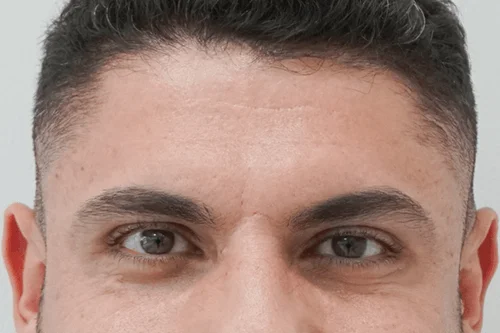
3. Forehead Wrinkles
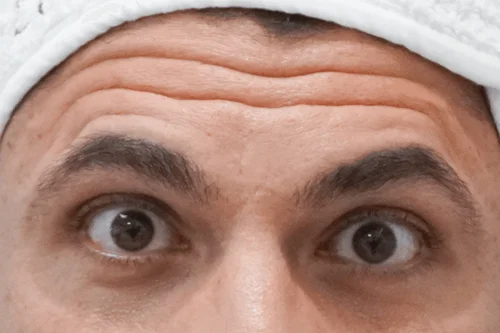
Forehead wrinkles are caused due to many factors like losing skin elasticity and using different muscles in your face. The biggest cause may be the later one – the contraction of frontalis muscles that raise the eyebrows and cause wrinkles across the forehead.
So, as the skin matures it loses its laxity and combined with gravity and facial muscles contractions forehead wrinkles and fine lines are formed.
BOTOX® is actually one of the most effective ways in reducing forehead wrinkles. It smooths the horizontal lines and vertical wrinkles between the eyes. The injections work to relax the muscles that cause these wrinkles to form. It prevents the muscles from contracting and thus the creases get softened. After the treatment, the forehead is much smoother as the wrinkles don’t appear anymore.
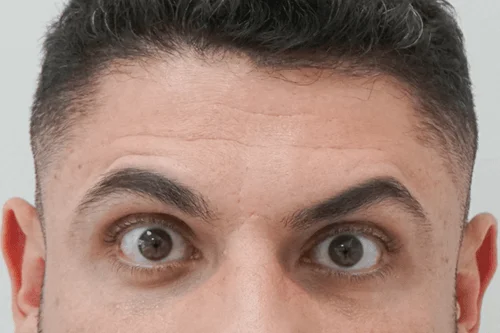
4. Bunny Lines
These wrinkles appear on the bridge of your nose especially when you scrunch up your nose when laughing. When you overuse facial muscles called nasalis muscles they show up straight or a bit diagonally on both sides of your nose under the bridge. As you get older, they stay around appearing as fine lines, even if your face is relaxed.
They might have a cute name but they are still a type of wrinkles that you worry about.
How do you check if you have bunny lines?
Scrunch up your nose like you are smelling something disgusting and look in the mirror. Do you see the wrinkles that form alongside your nose? You can see them really well or you can see them as tiny creases. They branch out from the inside of the eyes to the bridge of the nose. Now stop with scrunching and check it out – can you still see those fine lines? If yes, they are bunny lines.
So, again BOTOX® is an excellent choice for the treatment of bunny lines because it is injected into both sides of the nose, precisely targeting these lines. Botox injections temporarily limit the movement of your facial muscles. It is an effective way to minimize the appearance of bunny lines.
5. Lipstick Lines
Lipstick or smokers’ lines are wrinkles that appear on the lower and upper lip and fan out from the lip border. They are also known as pucker lines or perioral rhytids.
These wrinkles get even more prominent when you pucker your mouth by using Orbicularis Oris muscle that borders the mouth. These lines also appear because of the loss of collagen that happens as the skin ages and the constant clustering of the tissue because of muscle contractions. They make the lipstick run and smudge outside the lips – that’s how they got their name.
BOTOX® is a very common treatment for lipstick lines no matter how deep the lines are. It is effective because it relaxes the lines and eventually smooths them. Both upper and lower lip lines can be effectively treated. Botox is a simple in-office procedure and takes about 10 minutes. It causes minimal pain and downtime.
BOTOX® is injected in Orbicularis Oris muscle which results in temporarily freezing its movements. But you are of course still able to move your mouth as you normally do.
That’s one of the advantages of BOTOX® – it gives an absolutely natural appearance to the treated area.
6. Marionette Lines
These wrinkles extend from the corners of the mouth down to the chin. They cause the mouth to look as if turned down and give you a sad appearance. They are wrinkles that perhaps make people look the oldest.
They look like the borders of the jaw on a marionette puppet – hence the name.
As the skin ages, the fat pockets in your upper face start disappearing, while at the same time the fat pockets in your lower part of the face get more filled. So, your skin starts to sag down and create folds – marionette lines.
BOTOX® is an awesome option for treating these wrinkles because its injections relax the muscles that pull the corners of your mouth downward.
7. Chin Dimpling
As your skin ages, it can look bumpy on the chin area and give the appearance of orange peel, or in French ‘peau d’orange’. This effect is a result of over-flexing of the mentalis muscle found in the chin.
BOTOX® works wonderfully in this case because precise injection in the mentalis muscles (the only elevator of the lower lip and chin) makes it relaxed and thus the chin gets a smoother contour.
8. Neck Bands
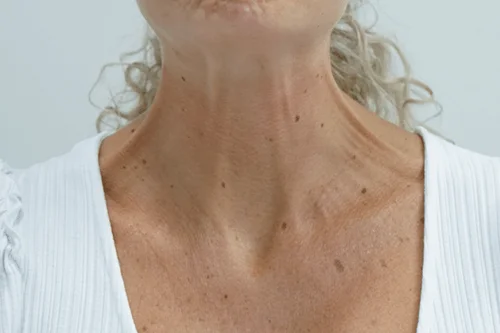
The neck is another area that can reveal our age. As the skin on the neck gets mature, dynamic muscles become more noticeable and cause wrinkles and lines that make us look older.
The neck consists of a pair of vertical bands that are called platysma muscle bands. They are placed at the front and sides of your neck. When they become hyperactive during the years there increase and combined with the loss of elasticity and volume your neck appears much older.
BOTOX® works great for neck wrinkles because when it is injected into muscles, they become relaxed and decrease hyperactivity. They become less prominent and your neck appears smoother, tighter and younger.
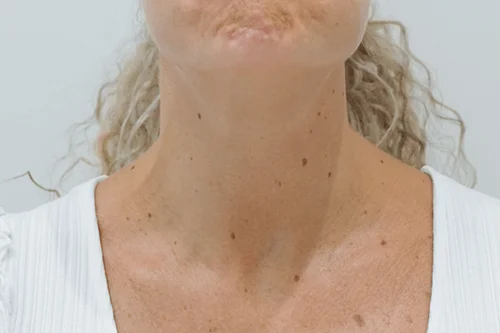
Another BOTOX® usage that is specifically efficient is –
A Nefertiti Neck Lift
It targets the neck and jawline and BOTOX® really contributes to the lifting and rejuvenating effect.

WHAT’S THE ORIGIN OF THE NAME A NEFERTITI NECK LIFT?
Remember the ancient Egyptian Queen Nefertiti? Her bone structure is still admired – a well-defined, long neck is a sign of beauty. Today, this procedure is the tool of choice to sculpt a well-defined jawline and slender neck.
This treatment helps you if you lack jawline definition, have a sagging neck, loose jowls or you frequently tense the neck area, which causes you to appear older. The treatment reverses the signs of aging in the lower face, neck and jaw and results in a smooth appearance and tighter skin.
BOTOX® injections are administered along the lower jawline in order to relax the upper Platysma which is responsible for pulling down the jawline. The result is a lifted appearance and enhanced definition of the jawline.
The second area of BOTOX® injections administration is muscles in the neck area. The result is smoother neckbands.
Also, some other areas that are treated are the Masseter muscles (the muscles used for chewing) and DAO – Depressor Anguli Oris. DAO is a muscle used for making facial expressions and it pulls the corners of the mouth downward and produces a frown. The results of BOTOX® treatments include reducing some of the downward pull and raising the corners of the mouth. BOTOX® injections in the Masseter slim down the face and make it look more heart-shaped instead of masculine square.
Aging is something we can’t escape, but we can reverse the signs with BOTOX®. BOTOX® injections cause facial muscles to relax and thus decrease the appearance of wrinkles and fine lines.
4. HOW CAN BOTOX® IMPROVE GUMMY SMILES?

Take a look in the mirror and smile. Do your lips go 3 millimeters or higher than your teeth and sit on the gums? Chances are you have a gummy smile. It may seem authentic and endearing and it doesn’t bother you. But if you are self-conscious about your smile and never feel comfortable when you smile, I’ve got news for you – you can improve it with BOTOX® treatment.
WHAT ARE THE CAUSES OF A GUMMY SMILE?
We can’t be all blessed with the ideal smile – exposing only 1 millimeter of pink upper gum, above our teeth.
There is a genetic predisposition, so some people have an overly grown upper jaw.
Others have a short or overactive upper lip that shows more gums when they smile.
Then there are teeth – they can be smaller or hidden and thus more gum is exposed.
And also, there is gingival hypertrophy – a condition when the gum tissue is enlarged or long.
HOW DOES BOTOX® WORK FOR A GUMMY SMILE?
The biggest advantage of BOTOX® treatment for gummy smiles is that it’s non-surgical and really quick. Not to mention that it’s highly effective. When BOTOX® is injected, it relaxes the upper lip muscles so the upper lip doesn’t rise so much when you smile. The treated area is on both sides at the junction of the nostril and nose to mouth fold.
The result – no gums showing. You get a natural and more attractive smile.

BOTOX® treatment for a gummy smile has a lot of advantages. It is non-surgical and therefore causes only a little discomfort. The results last for 3 months but when you repeat the procedure gradually you get more time between treatments.
There is no recovery time and you can continue with your daily activities right after the procedure.
After the procedure, you will see the first results as early as two days. The full results are visible two weeks after.
One more thing – your BOTOX® therapist will advise you to actively use the targeted muscles for a few hours. Also, you will need to avoid extreme cold or heat, street clear of excessive exercise and sit straight without leaning over for 4 to 6 hours. These aftercare measures are there to avoid any unwanted side effects.
So, return your confidence and smile again because the smile is the best cure for everything.
5. BOTOX® DOES WONDERS WITH EXCESSIVE SWEATING

Have you ever felt that your quality of life is greatly diminished by the excessive sweating and constant underarm pit stains on your shirts? Did it bother you so much that you couldn’t enjoy your social life? Well, what would you say if I told you that BOTOX® is absolutely effective in solving this problem and can prevent soaking through your clothes?
Find out how in the following chapter.
HYPERHIDROSIS – CONSTANT SWEATING
Excessive sweating or medically known as hyperhidrosis refers to any atypical sweating for example when it isn’t hot. People who suffer from hyperhidrosis drip sweat or soak through their clothes. Even if they use antiperspirants, it doesn’t help them.
People can experience excessive sweating on one area of the body or on large areas. If the hyperhidrosis occurs just underarms, feet, hands or heads it’s called focal hyperhidrosis. It is also known as The Silent Handicap, as it significantly affects the quality of life socially, emotionally and professionally.
Luckily, BOTOX® comes to the rescue again. It is safe and FDA-approved for the treatment of underarm excessive sweating.
HOW DOES BOTOX® WORK FOR HYPERHIDROSIS?
BOTOX® injections block the nerves that activate sweat glands. In normal conditions, the nervous system triggers the sweat glands when the body temperature increases. This is how the body naturally cools itself. But when people suffer from excessive sweating the nerves that trigger the sweat glands are hyperactive.
When BOTOX® injections are administered in the area of the body that sweats too much the hyperactive nerves get numbed. If the nerves can’t trigger the sweat glands, a person doesn’t sweat. BOTOX® injections are tiny and placed just under the surface of the skin.
The results show that BOTOX® can decrease sweating from 82 to 88%. The treatment starts to work 2 to 4 days post-procedure and the full results are noticed after 2 weeks. Sweating doesn’t occur from 4 to 12 months. This is when patients usually come for touch-ups because the BOTOX® treatment constantly shows long-lasting improvement in excessive sweating. It greatly improves the quality of life and patients report that they function much better in their daily activities.
WHAT CAN YOU EXPECT DURING BOTOX® FOR HYPERHIDROSIS TREATMENT?
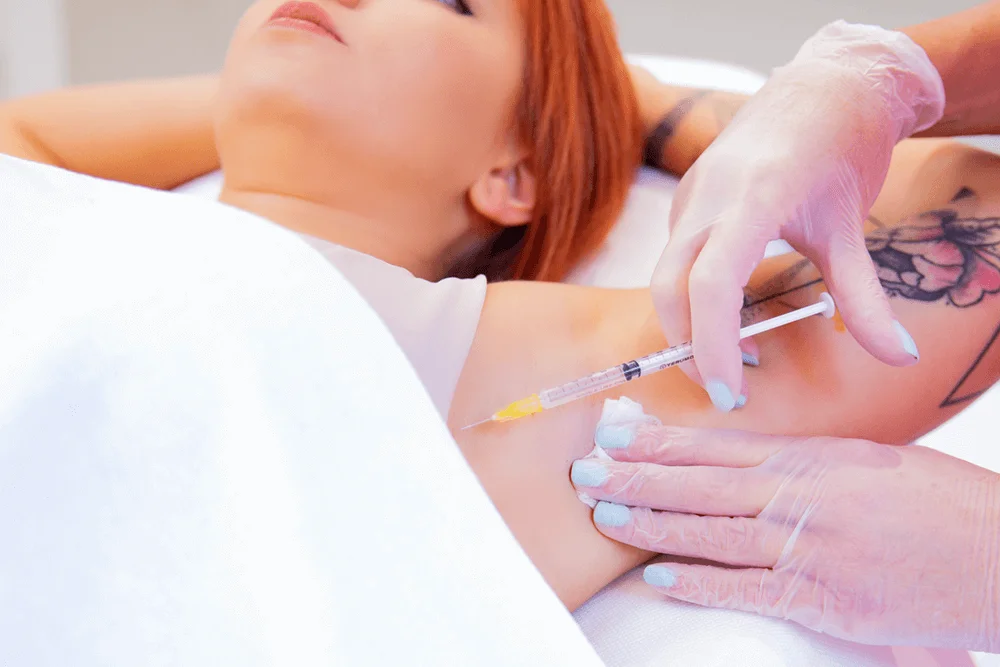
Patients handle the BOTOX® injections really well, which means that they don’t hurt, they are only mildly uncomfortable. The very treatments for underarm sweating can last for just 10 minutes. There are no special preparations, prior to the procedure, just avoiding shaving for 3 or 4 days. During the BOTOX® treatments, therapists use tiny needles to inject a very small amount of BOTOX® just beneath the skin across the area of sweating – they follow a grid about every 1 to 2 centimeters. The therapists first assess the area of excessive sweating and determine the number of needles they need to inject.
After the treatment is over, you can continue with your daily routine. You are advised to come again and have a follow-up in 1 or 2 weeks. This is because the therapist might have missed some sweating areas in the first round of treatment. These touch-ups actually make sure that you are getting the full benefit of this treatment.
Word of advice – choose a doctor that has experience in performing this treatment.
Doctors who are certified to do this procedure have done special training International Hyperhidrosis Society.
STOPPING SWEATING WITH BOTOX® – IS THAT SAFE?
Absolutely!
There are more than 2 million sweat glands in your body. Only 2% of them are localized in the underarm pits. So, when you temporarily block them with BOTOX® you are not interfering with the body’s natural ability to cool itself. You are just making your life easier.
6. HOW MUCH BOTOX® IS ENOUGH?
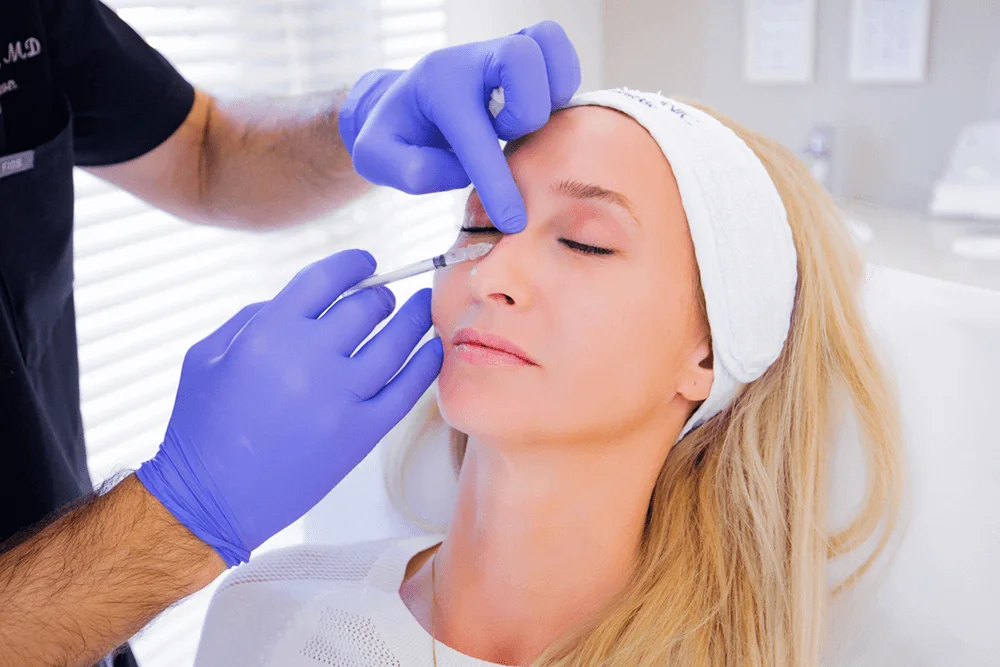
You might ask yourself what’s the right dosage of BOTOX® for each targeted area. I’ll tell you right away – it’s different for every individual, but still, there is the overall number of units that are used for the different targeted areas.
Let’s talk about the number of BOTOX® units in more detail.
Everyone is different.
That’s why not every patient will get the exact number of units as recommended. BOTOX® treatments are awesome because you can get a customized plan just for yourself. Customization depends on gender, your targeted areas and the strength of your facial muscles.
Men especially might need a little more unit than recommended. Simply because their facial muscles are stronger so they need more BOTOX® to relax the muscles.
But women can also get more units if their forehead wrinkles are especially prominent. So, as you can see the number of BOTOX® units can vary.
Sometimes less is more – you know how people say!
If it’s your first time the doctor will first assess your targeted area and determine how many BOTOX® units you actually need. Sometimes the BOTOX® practitioner will decide to start off with fewer units and add more at your follow-up treatment (of course if it is necessary).
REMEMBER: BOTOX® can always be added but it can’t be removed!
It’s good to keep this in mind. Since the full results of BOTOX® treatment are visible after two weeks, it’s better to wait and see.
BOTOX® UNITS
Since Allergan is the manufacturer of BOTOX® then obviously they have their own guidelines when it comes to BOTOX® units.
The usual treatment areas are the crow’s feet, forehead and frown area.
So, in order to achieve the desired results, you need the following number of BOTOX® units:
Crow’s feet – 12 units for these wrinkles, so 24 in total for both eyes.
Forehead – 20 units for the frown lines and 20 units for the wrinkles across the forehead.
So, for all three areas, you need 64 units of BOTOX®.
However, the number of units may vary as I’ve already said all depending on how deep your wrinkles are and how strong your facial muscles are.
Gummy Smile – 2.5 units are used on each side.
Bunny Lines – 10 units are usually used on each side of the nose.
Neck – for neckbands it is recommended somewhere between 20 to 60 units. The number depends on how much the necklines are prominent.
Masseter Muscle – typically 15 to 20 units are injected on both sides. This muscle is triggered when you clench or grind your teeth. It can be because of stress or simply a bad habit. It can cause pain in the jaw and lead to temporomandibular joint malfunction or it can make you look wider at the bottom of your face.
BOTOX® treatments actually make the face appear slimmer and fight against the symptoms of clenching and teeth-grinding.
Brow lift – 4 to 6 units are needed. BOTOX® is usually injected in the lateral part of each eyebrow.
If the brows are very low and droopy BOTOX® is injected into the procerus muscle – the muscle between the eyebrows and around orbicularis oculi muscles – the muscles around your eyes. This pulls down the tail of the brow. Also, sometimes BOTOX® is also injected into the upper part of the forehead to relax the muscles and pull the brows up.
Lip flip – usually 10 units are injected to get the best results. The treatment actually elevates the corner of your mouth and turns the upper lip up to make it look fuller. This BOTOX® procedure is one of the quickest treatments and most affordable.
The complete Nefertiti lift – 50 to 80 Botox units are needed for platysma, DAO and Masseter muscle.
Chronic migraines – total dosage for migraine prevention is 155 units. BOTOX® injections are administered into 7 specific muscles on the head and neck. In each session, you get 31 individual injections.
Hyperhidrosis (excessive sweating) – 50 units of BOTOX® are needed for each underarm. The results of this dose last for 6 months or more. Less than that brings help with symptoms only for a couple of months.
7. BABY BOTOX® – SMALLER DOSES
Are you in for trying BOTOX® for the first time but you are looking for a more discreet, but equally effective outcome? Baby BOTOX® is an awesome entry-level treatment. It provides a fresher-looking complexion and of course, it leaves your natural movements – well, natural.
Let’s dive deeper.
WHAT IS BABY BOTOX®?
To clear something up right at the start – of course, it’s not for babies. It’s just a smaller amount of BOTOX®. The name comes from micro-droplet units that are injected more accurately and superficially to provide you with a natural-looking complexion. When you get Baby BOTOX® treatment your muscles don’t entirely relax.
Benefits of Baby Botox®
- More natural appearance
- Fewer side effects than traditional Botox
- Retain facial movement
- Prevent wrinkle formation
- Release tension in the jaw
HOW IS BABY BOTOX® DONE?
When you decide to enter the world of cosmetic procedures it’s not a bad idea to start slow with anti-aging measures. Baby BOTOX® is injected across your face in smaller amounts and it is super effective if you don’t have very deep wrinkles. It’s an awesome choice for younger people as prevention. If you have deeper lines, you might not be fully satisfied with the results, and it’s better to opt for regular BOTOX® treatment. But the doctor is the one who will advise you the best.
Another great thing about Baby BOTOX® is that it can cover more areas of your face. It can target the usual areas like the forehead, crow’s feet, frown wrinkles but in other areas, it can give a slight lift and make the skin tighter.
WHAT DOES THE BABY BOTOX® TREATMENT LOOK LIKE?
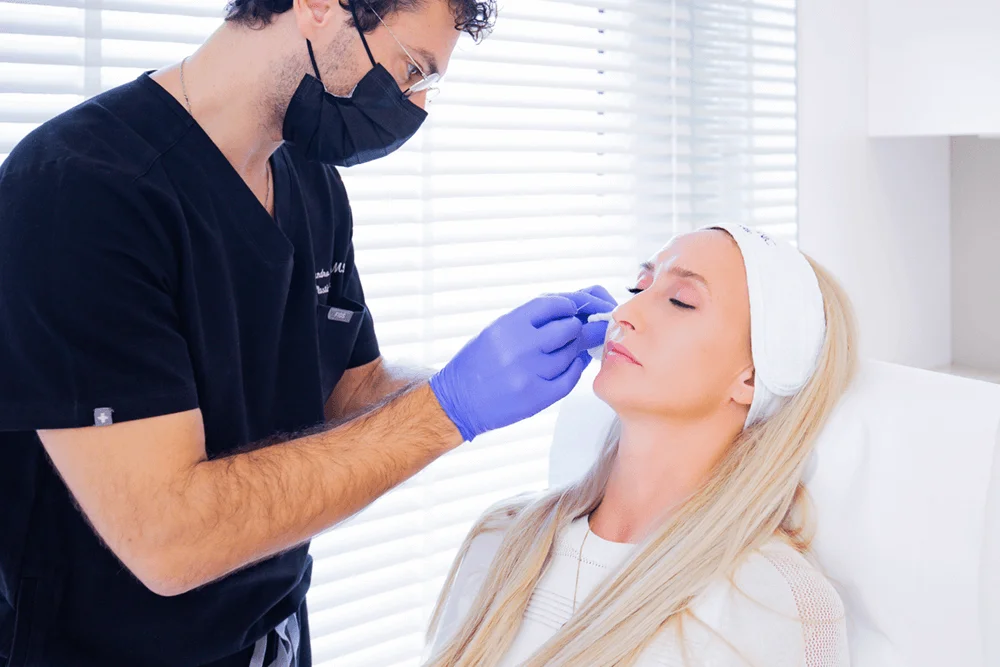
Well, it’s not much different than regular BOTOX® treatment, but if it’s your first time it’s good to discuss with the practitioner about your expectations. Also, you might want to be clear about what areas you target and ask all additional questions about the treatment.
During the treatment, you are injected with Baby BOTOX® in the targeted areas and the only difference from the regular BOTOX® is that you get a smaller number of needles and amount of BOTOX®.
The purpose of Baby BOTOX® is to relax the facial muscles but not completely, just to make them contract with less intensity than usual. So, your face appears smoother because there aren’t any fine lines anymore and you can still make your facial expressions naturally.
THE BENEFITS OF BABY BOTOX®
It might come as a surprise to learn that Baby BOTOX® doesn’t have some different formula than regular BOTOX®. The same botulinum toxin is used in both treatments. But administering Baby BOTOX® is more delicate than administering regular BOTOX®. The final result – you get a refreshed facial appearance.
When treating the lower part of your face doctors need to be especially careful and if possible, use fewer BOTOX®. Baby BOTOX® plays a good role here – it can treat Marionette lines, bunny lines, smokers’ lines or even make the chin appear tighter. The best part – after the treatment, the lower area of your face will appear natural.
Baby BOTOX® can be used in other parts of your body, not just the face. You can use it to lift your neck, on the décolletage to make any fine lines less visible, or even underarms to stop the sweating.
Baby BOTOX® can help people who experience pain in their jaw because it can be injected into the muscles where the jaw meets the skull. This treatment helps them to stop grinding and clenching their teeth. Another effect of this treatment is that since these muscles get relaxed, they give a V-shape look to the jawline and slim the face.
WHAT TO EXPECT AFTER THE BABY BOTOX® TREATMENT?
When you get traditional BOTOX® it can last between three to six months. On the other hand, Baby BOTOX® lasts for around two months, but it can vary from patient to patient. But this is not a big issue because if your muscles can’t frown or make other facial expressions you actually “educate” them not to do that even when BOTOX® wears off. It takes some time before muscles start contracting the same way as they did before you had BOTOX®. So, the bottom line is that you can get BOTOX® treatments once a year and keep your face soft and smooth.
Baby BOTOX® is actually awesome prevention and along with applying sunscreen and hydrating moisturizer, you can prolong the appearance of wrinkles for a longer time.
So in the end, Baby BOTOX® is a fabulous option if you are entering the world of cosmetic procedures and if you wish to achieve a more natural look. Also, if you already have some fine lines, you can prevent them from becoming deep wrinkles.
8. CAN GENTS USE BOTOX?
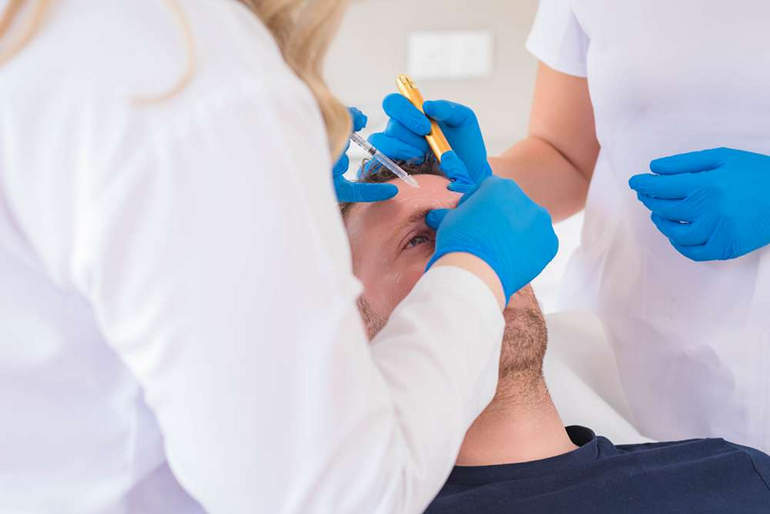
Sure! BOTOX® is for everybody. The world of grooming is changing and BOTOX® can be one of the best solutions for men. BOTOX® became famous by going one step further in the beauty world – it relaxes the facial muscles that create wrinkles and can even be used as a prevention. So, men do you want to enjoy BOTOX® and make your faces more enhanced?
Read the following chapter.
Men are also starting to realize that facial wrinkles primarily on their forehead reveal their age. First, they started with skincare products, but now they are demanding more and more BOTOX® treatments. And that’s totally Okay – both genders equally deserve to be satisfied with their appearance.
WHY ARE MEN CONSIDERING BOTOX®?
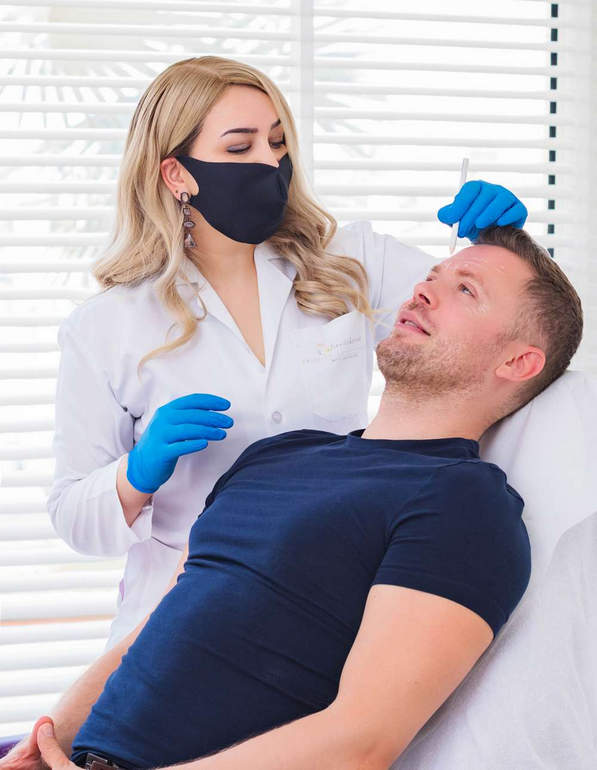
BOTOX® for men is really becoming more and more popular. There are a lot of reasons for this but most men consider this aesthetic treatment because they want to bring back their confidence. And how do they do it? By smoothing the deep lines and wrinkles on their faces and appearing younger. A youthful look goes a long way when men attend meetings both professionally and personally. The bar has risen on both social occasions – men must try to look their best.
BOTOX® is an amazing anti-aging treatment because it provides instant results that involve the minimization of wrinkles and fine lines. It also provides long-turn results – new wrinkles and lines are prevented from appearing.
When done properly the results of BOTOX® are definitely noticeable – it really makes a difference. So, gents don’t worry about looking frozen – BOTOX® relaxes the muscles but you are still left with soft facial expressions and don’t lose natural appearance.
HOW MUCH BOTOX® DO MEN NEED?
When it comes to skincare treatments the difference in gender is a bit different. As men tend to have heavier tissue on their faces, they do need a bit more BOTOX® than women. If they want to achieve the same results. Men typically have stronger muscles that make facial expressions, and the stronger the muscles the deeper more prominent wrinkles. That’s just the way it is – but these wrinkles can be easily reduced with the correct amount of BOTOX®. BOTOX® injection technique is a bit different when we talk about male patients because there are differences in anatomy compared to female patients and men could have potentially different goals.
Successful results in using BOTOX® for men requires balancing between masculinizing and feminizing the face because too much of either can result in unwanted outcomes. Because of different facial expressions and anatomy, BOTOX® therapists create unique custom-made treatments for every patient, whether male or female.
Both men and women treat the same areas with BOTOX® – predominantly the glabellar forehead lines, horizontal forehead lines and crow’s feet. Recently, men have started looking for BOTOX® treatment in the lower part of their faces like chin, jawline and part where BOTOX® injections slim and contour the jawline.
When it comes to pain tolerance men do tend to ask for topical numbing creams prior to the treatment. Numbing cream really helps if you are having BOTOX® treatment for the first time, and you are not used to quick pricks of the needles. But the needles are so fine that pretty soon you relax and time passes faster. Experienced BOTOX® therapists can finish the treatment really quickly.
BOTOX® injections don’t actually hurt much because the needles aren’t going very deep into the skin, only superficially. This is one of the reasons why BOTOX® is so popular – it is non-surgical, practically painless, quick and super effective.
WHAT IS THE FOLLOW-UP PROCEDURE?
Okay, so you are done with your first BOTOX® treatment. Now what?
Well, you need proper maintenance if you want to keep the desired results. BOTOX® lasts between 3 to 6 months and then it starts to wear off. But if you use it regularly you can prolong the effects. When your muscles get relaxed the skin will regenerate and smooth out the wrinkles and fine lines. Before each following session, the BOTOX® therapist will evaluate your present condition and administer the injections accordingly. You see, when you relax one muscle, the one which is not relaxed tends to take over. So, your BOTOX® therapist needs to balance the muscles in the right way in order to steer clear of unwanted results.
ONE LAST THING – EXCESSIVE SWEATING
Men could be even more concerned with this unpleasant condition. But, turning to BOTOX® treatment for underarm hyperhidrosis is the best solution.
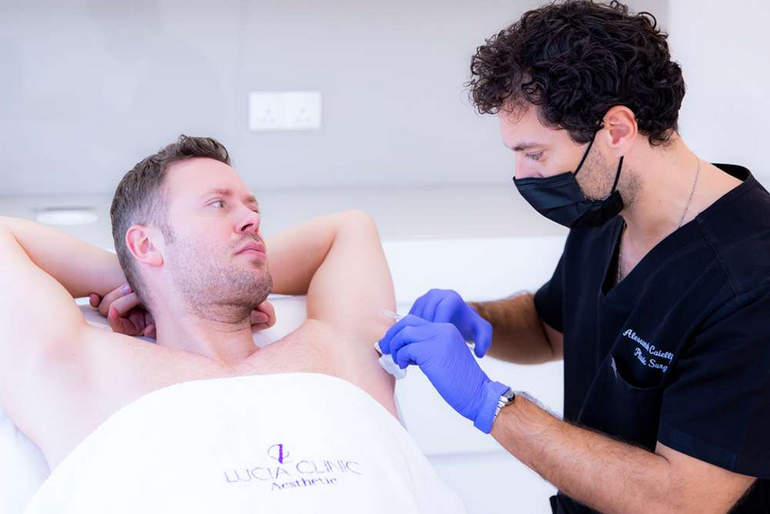
So, if you are dealing with this issue, this non-invasive treatment could really improve your quality of life. You won’t have to worry about sweaty armpits all the time and you will return your confidence.
Just remember – don’t cut any corners when considering a BOTOX® therapist. Choose an experienced one to avoid any unpleasant side effects.
9. WHY IS BOTOX® THE NUMBER ONE COSMETIC PROCEDURE?
Well, there are a lot of reasons, why people turn to BOTOX® treatments. Whether the reason is wrinkles, migraines or neck spasms, BOTOX® does miracles.
Let’s try to justify the fact that BOTOX® is awesome!
You hear about BOTOX® all the time – from your friends, your read about it on the internet or watch it on TV. Well, let me tell you right away – this is not the result of an effective marketing campaign. This is a testimony to the amazingly effective product and thousands of satisfied patients. BOTOX® really works.
BOTOX® is the most popular procedure because it has an anti-aging effect on wrinkles and fine lines. It makes you look younger. People first see your face when they meet you – make them wonder about your age! Having a BOTOX® treatment helps you to feel confident again.
BOTOX® IS PRACTICALLY PAINLESS
This is one of the best features of this product – it causes no pain. Since BOTOX® treatments are non-surgical they only cause mild discomfort. The needles that are used in the treatment are so fine that they feel like mild pricks. After a while, you get used to needles and actually tolerate the treatment really well. If you want to you can always ask for a topical numbing cream. BOTOX® therapist will apply it to the targeted area prior to the treatment.
One more thing – BOTOX® injections are administered just under the skin, so the pain is minimal.
So, if you are not willing to go under the knife BOTOX® is the best choice for you. You won’t be facing anesthesia and incisions, just a few injections and a youthful-looking, smooth face afterward. There is no hours-long procedure and long recovery time – just a quick procedure and you can go home.
THERE IS NO DOWNTIME AFTER BOTOX®
Another advantage of BOTOX®! Since it is a non-surgical treatment, it requires no recovery time. After the procedure is done you can continue with your daily routine right away. More importantly – you can enjoy the results right away.
When the procedure is over, you just relax a little bit and you can go home. Just avoid strenuous exercise for several days. Also, you shouldn’t massage the areas that were treated because BOTOX® can move to the places where it shouldn’t be. You definitely don’t want that to happen!
There are only minimal side effects that can appear after the BOTOX® treatment like redness, mild bruising and tenderness to the touch of the treated area. But, all these sensitivities end after a few days.
When your muscles are prevented from constant moving and creasing your skin, wrinkles and fine lines will gradually start to disappear. So, BOTOX® minimizes the wrinkles you already have, but also it prevents forming of new lines.
BOTOX® TREATMENTS CAN BE FULLY CUSTOMIZED FOR YOUR NEEDS
That’s another plus for this awesome product. There isn’t just one size that fits everybody. During your consultations, prior to the treatment BOTOX® therapists will assess your face, neck or other parts of the body that you wish to enhance with BOTOX®.
Together you will create a customized treatment plan according to the targeted area and the results you expect to get. So, you can start with smaller amounts of BOTOX® and gradually increase it if it’s necessary. BOTOX® results are built up over time.
If you only have fine, dynamic lines you will fix them with a smaller amount. If on the other hand, you have deeper, static wrinkles you might need more BOTOX® injections.
Bottom line is that your BOTOX® therapist will create the best and more importantly natural-looking results. Because of a customized treatment plan, created only for you, you don’t have to worry about getting a frozen or plastic look.
So, forget about invasive procedures. BOTOX® will smooth your skin and make it look rejuvenated. It will lessen your wrinkles and fine lines quickly and painlessly. Best of all, you will get a younger-looking appearance without having to lose time on a long recovery.
10. HOW CAN BOTOX® HELP WITH CHRONIC MIGRAINES?
In the search to find help with chronic migraines, you may have tried a lot of different things. Migraines can really affect the quality of life for people who experience them as the attacks can be agonizingly painful and uncomfortable. Luckily BOTOX® is one of the solutions that proved to be effective in treating chronic migraines and what’s even more important – it’s a safe and FDA-approved procedure.
SO, HOW DOES BOTOX® RELIEVE CHRONIC MIGRAINES?

Treatment for chronic migraine prevention usually includes 31 injections with 5 units per injection. Injection sites are likely to include:
- upper bridge above the nose
- forehead
- temples
- back of the head
- neck
- upper back
A good candidate for BOTOX® treatment is somebody who experiences headaches (including tension ones) on 15 or more days during each month and has at least 8 which are migraines. This kind of migraine is considered chronic.
BOTOX® is considered a preventive measure because when injected into certain areas of your body it blocks chemical signals for pain.
Doctors actually came to the conclusion that BOTOX® can help with migraines, because when patients who used BOTOX® for wrinkle treatment, reported that their migraines were relieved.
This was a good sign to start with the studies of BOTOX® for migraine treatment.
RESULTS OF THE STUDIES
In the research in which adults with chronic migraines participated, BOTOX® injections actually reduced the number of days they had migraines and other types of headaches. The participants also had more days when they didn’t feel the pain, and they didn’t miss work so much.
At least half of the participants that got two rounds of BOTOX® claimed that their headaches didn’t occur so often anymore – the days with migraines were cut in half each month.
By the end of the study, after five rounds of BOTOX®, almost 70% of participants reported the same results.
Doctors believe that BOTOX® works for chronic migraines because it stops neurotransmitters that carry the signals for pain from the brain before they reach the nerve endings around the neck and head.
HOW DOES BOTOX® TREATMENT FOR CHRONIC MIGRAINES LOOK LIKE?
The treatment is repeated every 12 weeks. Patients get shots of BOTOX® around their neck and head in order to prevent migraines. BOTOX® injections are administered into 7 different muscle areas – the forehead, bridge of the nose, the neck, the temples, the back part of the head and above the shoulder blades. It’s important to point out that BOTOX® injections are shot before the migraines start – they serve as a preventive measure.
Patients need between 30 to 40 shots equally on each side of the head. If they experience migraines in one specific spot, they need more injections on that spot. The results are noticeable 2 to 3 weeks post-procedure. Most patients start with 2 rounds 12 weeks apart and then continue with the treatment every 12 weeks. Overall, patients get BOTOX® treatment 4 times a year.
So, as you can see, BOTOX® treatments for chronic migraines can really be effective as a preventive measure and as many patients have reported, it really improves their quality of life.
11. UNUSUAL BOTOX® TREATMENTS – CERVICAL DYSTONIA AND BLADDER INCONTINENCE
BOTOX® is not just for wrinkles. It is so versatile. But, more importantly, it is safe and effective in treating different medical conditions. It has helped so many patients with their problems other than smoothing wrinkled faces. Find out about different BOTOX® usages outside the world of beauty.
Read the following chapters.
BOTOX® FOR CERVICAL DYSTONIA

This condition is pretty severe. It’s a movement disorder that causes compulsory muscle spasms in the neck. Muscle spasms are sudden movements in one or a group of muscles. You might also hear people calling them twitches or muscle cramps. These muscle spasms make your head and neck move repetitively which causes you to feel uncomfortable. Your head might end up in an abnormal position which eventually causes neck pain.
Symptoms of this medical condition include neck twisting, or head pulling forward, backward or sideways. When cervical dystonia progresses, it really causes significant discomfort and changes the quality of life. Therefore BOTOX® treatments are a good choice for easing the symptoms of this neurological condition.
The very cause of cervical dystonia is not known. Usually, people over 40 get it if they had head or neck injuries.
There are also other options for treating this condition like medication and physical therapy. But, BOTOX® remains the first-line therapy and combined with other treatments provides amazing results.
Since BOTOX® was FDA approved for the treatment of this condition it has shown some remarkable results.
Let me just remind you quickly that BOTOX® is a neurotoxin and it is injected into muscles to treat these involuntary muscle spasms.
HOW DOES BOTOX® WORK HERE?
Of course, there was a clinical study that proved that BOTOX® injections are effective in treating cervical dystonia. People that took part in this study got injections of BOTOX® and a placebo. The injections were administered to the muscles that were affected by this condition. The point of the research was to determine whether BOTOX® worked better than placebo at Cervical Dystonia Severity Scale – whether BOTOX® actually improved the scores on the scale. The scale consists of 54 points and as the score goes higher, there are more serious problems with the position of the head.
The final results showed that people who got BOTOX® injections actually managed to lower their score on the scale as opposed to people who got the placebo.
Since the FDA approval, BOTOX® is the first-line treatment for this condition – doctors prescribe it as the first help to ease the pain caused by cervical dystonia. Another plus for BOTOX®!
As I’ve mentioned BOTOX® is a neurotoxin and works by stopping the nerves from taking action. The nerves in your body transfer their signals through neurotransmitters – one of them is acetylcholine. BOTOX® stops the nerves from releasing this neurotransmitter and they don’t send signals to the muscles to contract or spasm. So, the spasms in your neck are prevented.
BOTOX® can quickly improve the symptoms of cervical dystonia – patients start noticing improvement in 2 weeks after getting the first dose. The full results are noticeable in 6 weeks.
HOW DOES BOTOX® TREATMENT FOR CERVICAL DYSTONIA LOOK LIKE?
During your treatment session, the doctor first applies a topical anesthetic on your neck to numb the skin. The BOTOX® injections are mixed with saline and after that administered to your neck in very small doses. The injections are meant to make the contractions weaker and block the signals from the nerves. The doctor follows the EMG guide in order to precisely inject the needles – this is important because this procedure is very delicate. The treatment lasts between 15 and 20 minutes. Once the BOTOX® is injected in the correct areas the treatment is over and you can go home since there is no downtime.
The results of BOTOX® treatment for this condition include returning the function of neck muscles, muscle spasm relief in 2 to 3 days post-procedure, long-term pain relief when combined with medication and exercise, fewer remissions, improvement of abnormal postures and movements.
BOTOX® treatment for this condition works as symptomatic relief and it can’t fully cure it.
THE DOSAGE OF BOTOX® FOR CERVICAL DYSTONIA
After BOTOX® for this treatment was FDA approved, there are accurate guidelines that doctors need to follow in order to perform this procedure. By guidelines, I mean the correct dosage. Also, doctors need to explain to the patients that this procedure is not the cure for cervical dystonia. Its goal is to decrease the neck pain and allow the head to return to its normal position.
After assessing the patient’s condition, the doctor determines the base dose, according to the head and neck position, hypertrophy of the muscles, pain localization and of course the medical history. If the patient is trying BOTOX® for the first time, the doctor will probably use lower doses.
In the clinical study, I mentioned before the average dose was 236 units. However, your doctor will decide on the total amount of BOTOX® that will be suitable for your treatment. The units of BOTOX® are divided into several injections. As I said your doctor can start with a lower dose and then increase it when he determines how your body reacts to BOTOX®.
HOW OFTEN DO YOU GET BOTOX® FOR CERVICAL DYSTONIA?
This also depends on your doctor – he/she will recommend the frequency of sessions. First, they could start with the treatment every 3 months. If you don’t experience any side effects and if BOTOX® is working for you, they will continue with the sessions.
Usually, the effects of BOTOX® start to wear off after three months.
Before you start with your BOTOX® treatments inform your doctor if you have some other medical conditions that could interfere with BOTOX®. These conditions include being allergic to BOTOX® ingredients, having a neuromuscular disorder, having an infection in the neck area, being pregnant or breastfeeding.
In the end, if your body responds well to BOTOX® treatment you can really get rid of chronic neck pain and spasm. Your quality of life can be improved beyond measure.
BOTOX® TREATMENTS FOR BLADDER INCONTINENCE

This is another unpleasant medical condition that can be treated with BOTOX® injections. If you are experiencing constant bladder incontinence then BOTOX® could be the rescuer here. Also, if you have already tried other options for treatment of urge incontinence or overactive bladder and had little to no success, then try BOTOX® to relieve the symptoms.
Unfortunately, urinary incontinence is not an uncommon condition. Almost 17 percent of women and 10 percent of men suffer from this issue. It can really harm your mental, physical and social well-being.
Urge incontinence is the loss of urine unintentionally. It is caused by the contraction of the bladder.
If you have an overactive bladder, you can feel an unexpected urge to go to the bathroom and you can’t control it. Or you urinate more than usually – more than 8 times a day and more than three times during the night.
Urge incontinence and overactive bladder are not the cause of physical movement or activity like exercising, sneezing or coughing. This condition is called stress incontinence, but you can have urge and stress incontinence simultaneously.
A VISIT TO THE UROLOGIST
When you decide to try BOTOX® treatment for urinary incontinence, you visit your urologist. Just make sure that you choose a doctor that has experience in administering BOTOX® injections because this is a very delicate procedure. BOTOX® injections need to be administered to precise areas in order to avoid any unwanted side effects.
BOTOX® works the same as in other treatments. It relaxes the muscles and enables you to have more time to reach the bathroom when you need to go.
Patients generally tolerate the injections really well and compare the pain to period cramps. So, BOTOX® injections don’t actually hurt, they are just uncomfortable.
Another plus for BOTOX® – most patients experience the relief of the symptoms really fast. Only after a few days, patients do feel better. The results last approximately 6 months, but patients can get injections during that period.
The possible side effect is urine retention so, men who have a history of prostate enlargement should avoid BOTOX®.
Even though urinal incontinence starts to develop as we get older, we shouldn’t live like that. Luckily, BOTOX® can really provide excellent results for this condition and once the symptoms are reduced the quality of life gets improved on so many different levels.
This is it. This is my ultimate guide for BOTOX®. Do you still have any questions about this awesome treatment? Don’t shy away from asking them.





